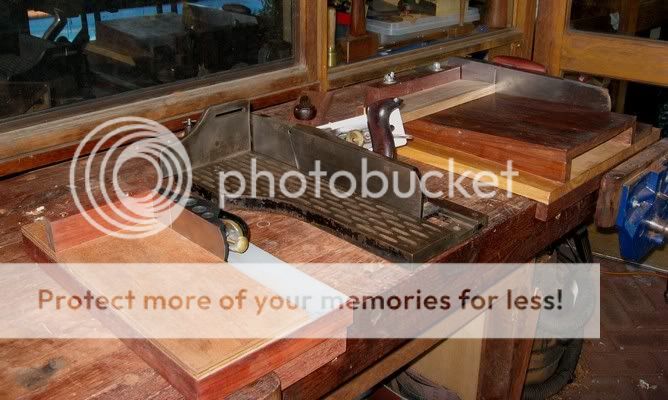woodbloke
Established Member
Mr C wrote:
I use an Eclipse clone honing gauge modified to Mr C's specification (as indicated in a very early edition of F&C, tho' don't ask me which one) and it is superb. If used as Mr C suggests a straight or cambered hone can easily be achieved by varying finger pressure during the strokes along the stone...try it out, it's one of the best honing guides out there - Rob
Off stone guides are generally cumbersome in my opinion, and the £5-xx Eclipse clone from APTC does a fine job in this workshop. I apply finger pressure to the blade, near the edge, and keep the weight off the guide itself.
This certainly works exceedingly well on waterstones which must be the softest sharpening kit available. Diamond stones must be the hardest and I can assure you that there is absolutely nothing to worry about if you wish to use a guide on one of these.
I use an Eclipse clone honing gauge modified to Mr C's specification (as indicated in a very early edition of F&C, tho' don't ask me which one) and it is superb. If used as Mr C suggests a straight or cambered hone can easily be achieved by varying finger pressure during the strokes along the stone...try it out, it's one of the best honing guides out there - Rob

































